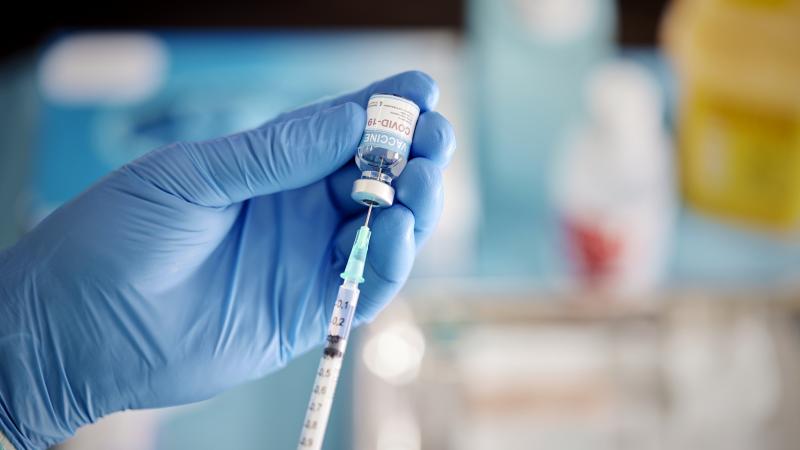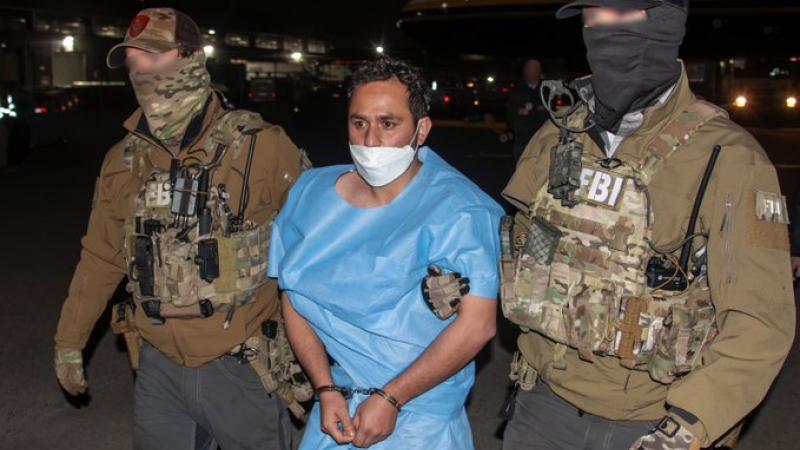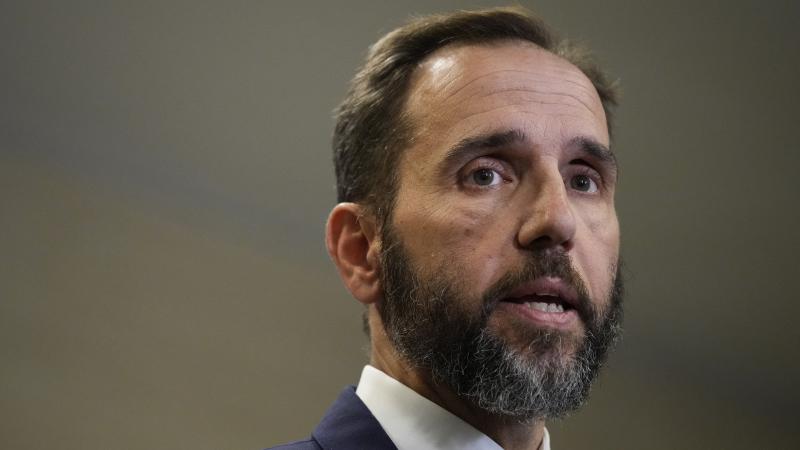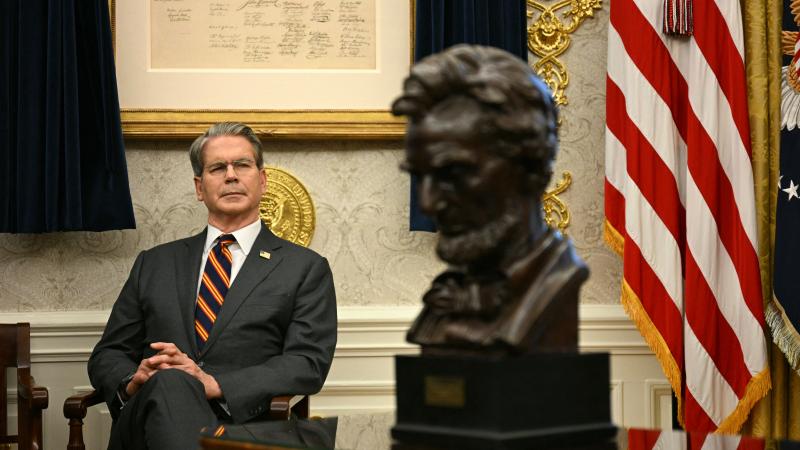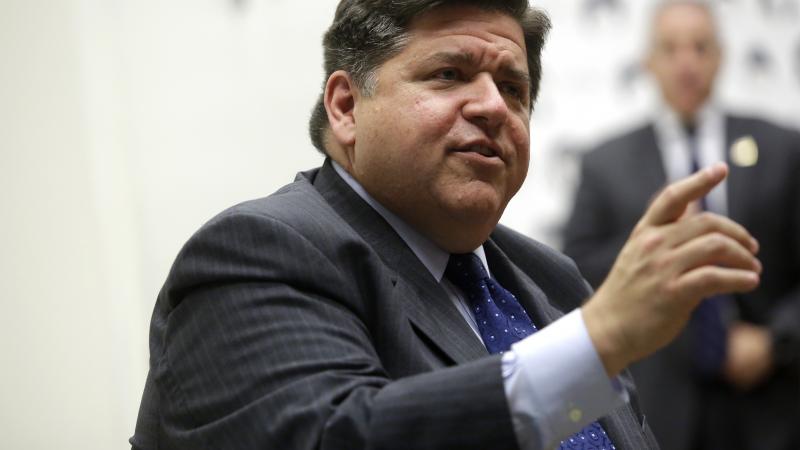Acclaimed medical center appears to bury data undermining COVID-heart risk study
Cleveland Clinic and research partner USC both touted study on doubling of risk for heart attack, stroke and death for three years after COVID infection, but buried figures show increased risk only applies to hospitalized patients.
With federal authorities recognizing the plunge in COVID-19 vaccine effectiveness as early as four months after each jab, which may actually increase the risk of subsequent infection, the public health establishment is trying to rekindle Americans' interest in a so-called layered mitigation strategy to keep COVID infections at bay.
While it leans into one-size-fits-all vaccination as the best way to avoid severe outcomes from an increasingly mild virus with near-total natural immunity nationwide, the Centers for Disease Control and Prevention still recommends wearing any kind of mask and social distancing as an "additional prevention strategy."
Mask mandates are back in several California Bay Area healthcare settings, including for visitors and patients in Silicon Valley's Santa Clara County, despite little evidence that even the highest-quality masks provide meaningful protection as worn in real life as opposed to models.
Just outside D.C., the University of Maryland Medical System requires masking in some situations and even permits cloth masks, whose usefulness against respiratory viruses was in doubt long before SARS-CoV-2 – a view reaffirmed by a 2021 large randomized controlled trial that purported to find a small benefit from surgical masks, but only for ages 50 and up.
Their ostensible purpose is the non-pharmaceutical reduction of infection and associated health problems, most well-known the shadowy and subjective condition known as long COVID, which may ironically result from excessive masking.
But one of the nation's best-known nonprofit medical centers appears to have misled the public on the risk of long-term heart damage from COVID infection through selective presentation of data from its recent review of early-pandemic records from the half-million-patient UK Biobank.
The Cleveland Clinic used the fear-inducing headline "History of COVID-19 Doubles Long-term Risk of Heart Attack, Stroke and Death" to tout its researchers' peer-reviewed study in the American Heart Association journal Arteriosclerosis, Thrombosis, and Vascular Biology.
So did the National Institutes of Health, which funded the research. It repeatedly emphasized the study population was "unvaccinated people" because the researchers limited them to patients who tested positive for COVID or were otherwise coded as infected from February through December 2020 – implying that jabs might have reduced their heart risk.
The University of Southern California's medical school, whose researchers also participated, gave a less alarmist take that emphasized the heart problems from "severe" infections and hospitalizations while still claiming "[a]ll patients" had a higher risk of "major adverse cardiac events" throughout the three-year review period.
What everyone left out: The Major Adverse Cardiac Events, or MACE, risk among those who weren't hospitalized did not differ meaningfully from non-infected controls, calling into question the phrasing "all levels of severity" and especially Cleveland Clinic Center for Cardiovascular Diagnostics and Prevention Director Stanley Hazen's representations.
The discrepancy, which former New York Times drug industry reporter Alex Berenson discovered when examining the supplementary materials in the study, is especially relevant to the ongoing dispute over whether the virus or the vaccine creates a greater risk of heart problems in some populations, especially young men at low risk from COVID itself.
Critics of one-size-fits-all vaccination argue the strategy needlessly increases the risk of heart-related inflammation myocarditis and pericarditis because COVID infection cannot truly be prevented, just delayed, as has been clear since the Delta wave tore through vaccinated Americans in summer 2021, leading the CDC to resume universal mask recommendations.
Another three-year study of heart-attack patients in Spain found COVID vaccination makes them far likelier to have MACE within six months of their attacks, especially after infection.
The complete omission of the "risk ratio for the non-hospitalized patients," on top of the buried numbers for the non-hospitalized infected group and the uninfected control group, is "scientific and medical malpractice," Berenson wrote in his newsletter last week.
"Roughly 98 percent of all adults, and 90-95 percent of adults over 60, who get Covid are healthy enough to recover without hospitalization," he said. "Their risk – or lack thereof – should have been clearly disclosed."
Hazen's interviews similarly emphasize the long-term universal risk of heart problems following infection. "The findings reported are not a small effect in a small subgroup," Hazen said in his employer's press release, which discloses he's a "co-inventor on pending and issued patents held by Cleveland Clinic in relation to cardiovascular diagnostics and therapeutics."
He told CNN there was "no sign of attenuation of that risk" over time – the opposite of the mainstream medical establishment's dismissal of post-vaccination heart inflammation as fleeting and mild in the face of countervailing evidence.
The study, as framed, was splashed across media as varied as The Hill, the New York Post and WKYC. The aggregator SciTechDaily simply republished Cleveland Clinic's press release, and the University of Minnesota's Center for Infectious Disease Research and Policy skipped over the buried data spotted by Berenson.
Cleveland Clinic spokesperson Alicia Cooney provided Just the News a response on behalf of Hazen in an email when asked why they appeared to bury data that would cast the study in a different light.
"SUB-ANALYSES OF THOSE WITHOUT SEVERE COVID-19 (NON-HOSPITALIZED) SHOW THEY REMAIN AT SIGNIFICANT INCREASED RISK FOR INCIDENT MI [myocardial infarction], STROKE OR DEATH," the short statement reads.
It then quotes the paper's "main findings" about the 2.09 "hazard ratio" for the MACE outcomes of those with COVID infections "at all levels of severity" over 1,003 days of follow-up.
USC researcher Hooman Allayee, Hazen's co-senior author, did not respond to a query for their rationale in burying the data that countered their across-the-board risk framing. Neither did USC or NIH on their choice of framing.
The Cleveland Clinic did not tout research by a different team that found the 2023-2024 COVID vaccine formulation was particularly ineffective compared to the increased risk of infection associated with each jab, suggesting its disinterest in challenging mainstream narratives.
The lead author of that study, which started with newly authorized bivalent vaccines in 2022, told Just the News last month that two peer-reviewed journals passed it over and his team had stopped trying to get it published because the variant on which it's based "is effectively gone."
The Cleveland Clinic-USC study compared about 10,000 patients with COVID in the pandemic's first year to population controls from Biobank – more than 200,000 total and nearly 39,000 "propensity score-matched controls." Beyond the association between three-year risk of MACE and infection, researchers looked at blood type's effect on MACE risk after infection.
The wording didn't hint at the vast difference in risk between hospitalized and non-hospitalized infected groups, saying only the former had a "greater extent" of elevated risk compared to controls.
The MACE risk for COVID hospitalization without a history of cardiovascular disease was even greater than for COVID-negative patients with cardiovascular disease, and patients with type-O blood had a lower risk of "thrombotic events" than those with other blood types.
Infected people as a whole were about twice as likely to have a heart attack, stroke or die within three years of infection, and almost four times as likely with COVID hospitalization, which the study deemed a "coronary artery disease risk equivalent."
The picture is far more "reassuring" in the supplementary materials, Berenson said, after the figures have been "reverse-engineered, as they are never provided openly." The 8,000 infected people who weren't hospitalized had nearly the same MACE rate (4.3%) as the controls (4.2%).
It shows the authors are "basically double-counting the hospitalized group’s risk to hide the lack of extra danger for everyone else" and then focus on the hospitalized group, parsing its risk in many different ways," he wrote.
Berenson told Just the News the co-senior authors didn't respond to his requests to explain burying the non-hospitalized risk and that the Cleveland Clinic simply reiterated one finding from the study, that infected people were twice as likely to have MACE.
The Facts Inside Our Reporter's Notebook
Links
- plunge in COVID-19 vaccine effectiveness
- as early as four months
- may actually increase the risk of subsequent infection
- layered mitigation strategy
- one-size-fits-all vaccination as the best way
- wearing any kind of mask
- social distancing
- several California Bay Area healthcare settings
- visitors and patients in Silicon Valley's Santa Clara County
- little evidence that even the highest-quality masks
- University of Maryland Medical System requires masking
- usefulness against respiratory viruses was in doubt
- 2021 large randomized controlled trial that purported to find
- shadowy, subjective and extremely well-funded
- may ironically result from excessive masking
- half-million-patient UK Biobank
- Cleveland Clinic used the fear-inducing headline
- Arteriosclerosis, Thrombosis, and Vascular Biology
- National Institutes of Health, which funded the research
- less alarmist take
- Alex Berenson discovered
- supplementary materials
- leading the CDC to resume universal mask recommendations
- three-year study of heart-attack patients
- 98 percent of all adults
- 90-95 percent of adults over 60
- He told CNN
- dismissal of post-vaccination heart inflammation as fleeting and mild
- The Hill
- New York Post
- WKYC
- SciTechDaily
- Center for Infectious Disease Research and Policy
- 2023-2024 COVID vaccine formulation was particularly ineffective
- two peer-reviewed journals passed it over


